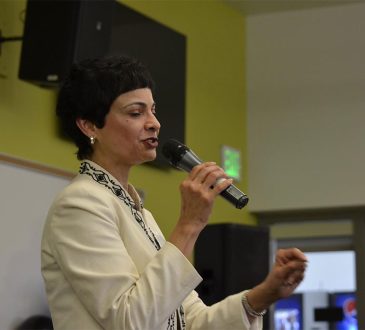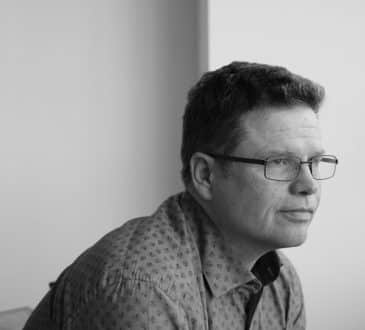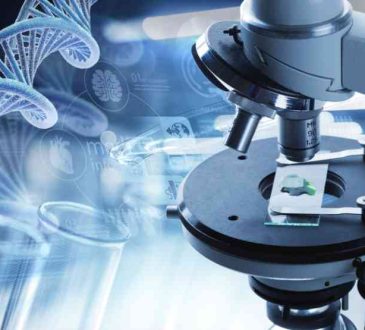The CEO is Now the Chief Change Officer

The role of the Chief Executive Officer (CEO) is to lead the development and execution of long-term strategies with the ultimate goal of increasing value. However, this role is evolving. Today’s CEOs are facing an unprecedented volume of increasingly fast-moving pressures — from rapidly changing consumer demands and dramatic technological advances, to significantly increased market competition. Companies are operating in an environment with significant economic, environmental, political and social volatility, uncertainty, complexity and ambiguity (VUCA). To be successful, companies must be able to change and evolve, extremely rapidly. And, it is the role of the CEO to lead that change.
The role of the CEO has expanded. Now, in addition to providing strategic, financial and operational leadership for a company and collaborating with the Board of Directors and the senior leadership team, the CEO must also be the Chief Change Officer. S/he must lead the company to reinvent itself rapidly and repeatedly, to ensure the longevity and sustainability of the company and its people.
Financial and operational management have become table stakes. CEOs of 2020 and beyond must, above all, inspire their people to create a better tomorrow — and do it quickly.
Especially as we head into the second half of 2020 and face even more business pressures than before as a result of the COVID-19 crisis, CEOs (or Chief Change Officers), must be able to do three things really well.
See the future.
CEOs will need to be able to envision a better tomorrow and shape their organization to adapt to that tomorrow. To do so, they must watch trends, evaluate data and become comfortable making hypotheses about the future, despite significant uncertainty in the present. This will help them ensure they have a clear line of sight to the challenges and opportunities facing their business, and spend time thinking expansively about what the future could look like. Specifically, they must be able to consider and plan for how the following should look in the future:
- Consumer/customer needs: What consumers/customers need and want, and how they want to get those needs met.
- Business model: How the business must operate to meet those needs.
- Organizational structure: The roles, responsibilities and structure required for employees to execute those operations.
- Skills and capabilities. The skills and capabilities required for success.
- Ways of working. How people will work together day-to-day to get it done.
Mobilize their teams.
CEOs must be able to energize people to act on the vision for the future, and equip leaders and employees at all levels to deliver on that vision. Specifically, they must:
- Articulate a compelling call to action to give people a sense of purpose, as a team and as individuals.
- Build bold and inspiring leaders, who can generate and maintain momentum into the future.
- Encourage employees to be dynamic, stepping out of their comfort zones to try new things, approaching each day with a growth mindset.
- Empower team members to deliver impact, always looking for opportunities to drive outcomes and leave things better than how they found them.
- Invest in the capabilities of the leaders and employees on the team, helping them build the skills and mindsets needed for success, and practice the behavior required for the day-to-day.
Keep people motivated and engaged along the way.
They will need to practice the self-care and personal agility needed to keep themselves and others fresh, focused and inspired, even in the face of uncertainty and ambiguity. And, they’ll need to nurture positive and productive energy across four Energy Zones:
- C-Suite.
This critical group will set the tone for the rest of the company. They must have collective goals and an incentive plan to match those collective goals. This group needs to know when to push forward or pull back on their own respective agenda so they can collaborate in a way that will drive rapid progress and reinvention for the company. They must be encouraged to lead with low ego, high curiosity, significant humility and endurance. They should be expected to delegate and invest in the success of others. - Magic Middle.
Middle managers are the cornerstone of success for the CEO as Chief Change Officer. Sandwiched between the executive team and front-line managers and employees, middle managers must be empowered as champions of the future, and be expected to translate the executive vision for change into action. They are also the eyes and ears of the organization and its consumers or customers, and have a unique and valuable perspective that should be appropriately involved in shaping the future of the company. This will result in a better outcome, as well as more engagement and commitment toward action. - Manager-Coach.
These front-line supervisors do most of the hiring, performance management, coaching and rewarding of employees. They know what is needed to get the job done and have direct influence over each person’s output, day-to-day. The CEO as Chief Change Officer must ensure these people are equipped and inspired to hire the right talent, engage people in their work, coach them to learn and grow, and drive outcomes. These important people must have the opportunity to build the skills and tools needed to deliver the desired employee experience. - Front Line.
Front-line employees should be delivering results, every day. Whether it’s for each other or for customers or consumers. They know the inner workings of the business and of the people they serve. They sit where the “rubber meets the road,” and can make or break the future of an organization, based on whether they are on board for the journey or whether they are afraid or unsure of how to change themselves. The CEO as Chief Change Officer must ensure these people are open to learn and can see themselves in vision for change — and feel equipped to deliver the customer or consumer experience of the future.
In summary, the CEO role is no longer just about the financial, operational and strategic operations of the future. In a world that is changing by the minute, they must be the Chief Change Officer, the leader that inspires others to create a better tomorrow — who can see the future, mobilize action and keep people energized along the way.
Commentary by Christine Andrukonis. Here’s what you’ve missed?
World’s Best Universities.
World’s Best Fashion Schools.
World’s Best Medical Schools.
World’s Best Business Schools.
Add CEOWORLD magazine to your Google News feed.
Follow CEOWORLD magazine headlines on: Google News, LinkedIn, Twitter, and Facebook.
This report/news/ranking/statistics has been prepared only for general guidance on matters of interest and does not constitute professional advice. You should not act upon the information contained in this publication without obtaining specific professional advice. No representation or warranty (express or implied) is given as to the accuracy or completeness of the information contained in this publication, and, to the extent permitted by law, CEOWORLD magazine does not accept or assume any liability, responsibility or duty of care for any consequences of you or anyone else acting, or refraining to act, in reliance on the information contained in this publication or for any decision based on it.
Copyright 2024 The CEOWORLD magazine. All rights reserved. This material (and any extract from it) must not be copied, redistributed or placed on any website, without CEOWORLD magazine' prior written consent. For media queries, please contact: info@ceoworld.biz
SUBSCRIBE NEWSLETTER








